






 |
|||||||
 |
 |
 |
 |
 |
|||
 |
|||||||
|
John Hogan 6J5 / 10Y John Hogan is one of those tube amp pioneers of yesterday who has become an underground legend. Not so well known and revered as many of the masters featured on this page, Mr. Hogan nevertheless still has a dedicated and loyal following years after his death and despite the fact that his hand built amps all seem to feature a crude, recycled aesthetic and a low-end look. Flat black recycled chassis, duct tape, and empty unused tube sockets are all hallmarks of a Hogan amp and present a somewhat difficult leap of faith for a new owner to see past. Myself included. What a strange juxtaposition then, when most of the time these crude builds are graced with some of the finest audio glass ever made, and sound better than most anything you will put them up against. John’s builds have “the sound”. John Hogan was an experimenter and a rule breaker. His 1930’s Webster push pull transformer single ended amps are legendary, and certainly break some rules. There weren’t many of these rough gems made, and people tend to hold on to them. It took me years to source my first Hogan amp, a 300B featured elsewhere on this site. Later I picked up a single, orphaned VT-52 monoblock that I’ve been using with an acoustic electric guitar to power a Zenith 49cz852 speaker. A very sweet but low powered “super 45” guitar amp. And below we have the third (but hopefully not last) John Hogan single ended amp that I’ve been fortunate enough to own; a Type 10 amplifier driven by the venerable and often overlooked 6J5 triode. I’m a big fan of the type 10 tube; its simply one of the very finest audio amplifying devices ever created, and although its not a common everyday tube, it is a very unique and special sounding one. The majority of the 10 tubes feature a Thoriated Tungsten filament that adds both a brightness to the physical glow of the tube and a special glow to the sound it produces. The later Oxide filament tubes have a slightly leaner sound, also very good, so there is a some variety to be found in this tube type. But the 10 remains a bit of an outlier in the triode world. This is the only Type 10 amp from John Hogan that I have ever seen, and perhaps it is the only one. Being an enthusiastic fan of John’s 300B amp, I was excited to hear his 10! Coming to me directly from service with a tech in Colorado, this industrial-beautiful masterpiece did not disappoint. Getting it hooked up and running for the first time, and there is a small amount of hum at idle through the 100 db/wm panels. Then Tedeschi Trucks Band with Its So Heavy came flowing into my room like a golden river through the Lii F18 speakers; a big, bold and thick sound with every nuance and detail floating past. I just had to smile. Next up was Lana Del Ray’s Young and Beautiful, one of my late daughter’s favorites. Again, deep pulsing rich tones flood the room and the little micro details are still right there. Incredible, and not even warmed up. Typical of the 10, this amp brings out everything on the recording, good or bad. Who knew how much studio noise there was on Leon Russell’s Song for You? Do you want that, or not? I like it, and this amp is forgiving enough with the program material so that there is nothing cold or etched in the presentation; everything flows along nicely and even poor recordings still sound pretty good, which is not always the case with the 10 in my experience. Rough aesthetics aside, this is an amplifier that sees everything on the recording, but still manages to get out of the way and let the warmth come through. With a unique and one-of-a-kind piece like this amplifier, its hard to recommend anything specific to the reader. It is what it is, in and of itself. I admire Mr. Hogan’s choices. The Type 10 is a tube that others should pursue as well; it's a richly varied family of triodes that were made in large enough quantities to be easily available as new old stock from 90 years ago. The same could be said of the 6J5 driver. There are still so many rich sounding, relatively unknown tubes out there that are suitable to make hifi; the 6CB5a, the 6EM5, the 6BQ6 to name a few. They all have their sound. The surface has only been scratched, with most of the focus so far being on the obvious console radio tubes that were produced for the home consumer en masse. But there are numerous industrial tube types that will reward an adventurous builder, and the 10 is only one of the better known. I wish I could keep them all. This one is slightly too wide for my back room storage rack, so its days are numbered here, but what a pleasure to own for my time with it. I hope to experience as many of Mr. Hogan’s wonderfully quirky and uniquely magical amplifiers as I can. Happy listening everyone. |
||||||||
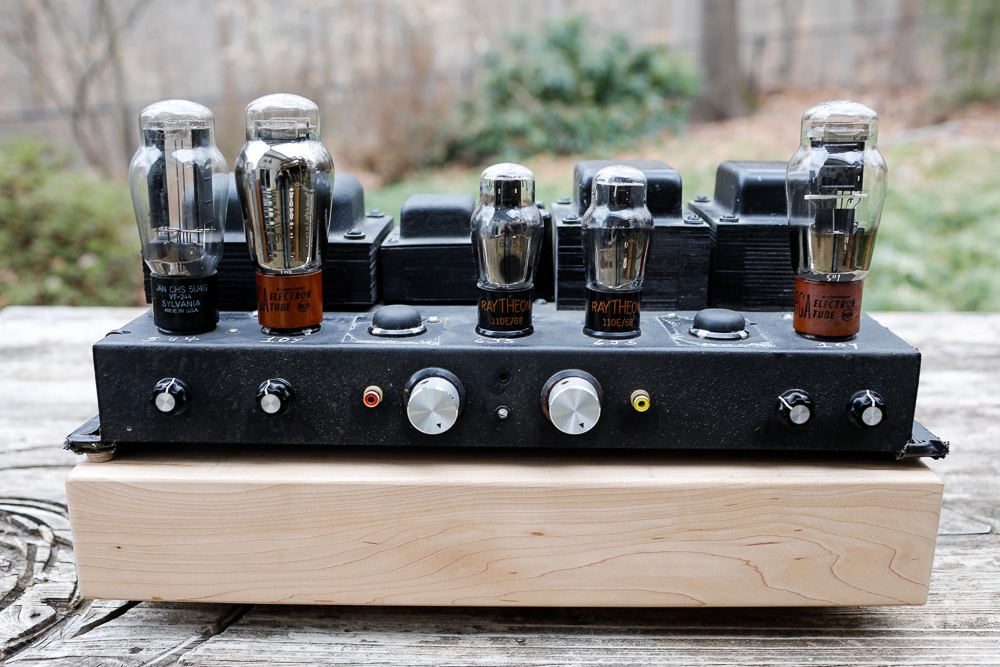
|
||||||||
|
Rough or not this is a very classic looking tube amplifier. I appreciate that John put dual volume controls on seemingly all of his builds. This way I can know what I’m hearing is the amplifier and not try to differentiate what part of the presentation is that “great sounding” preamp that homogenizes everything. |
||||||||
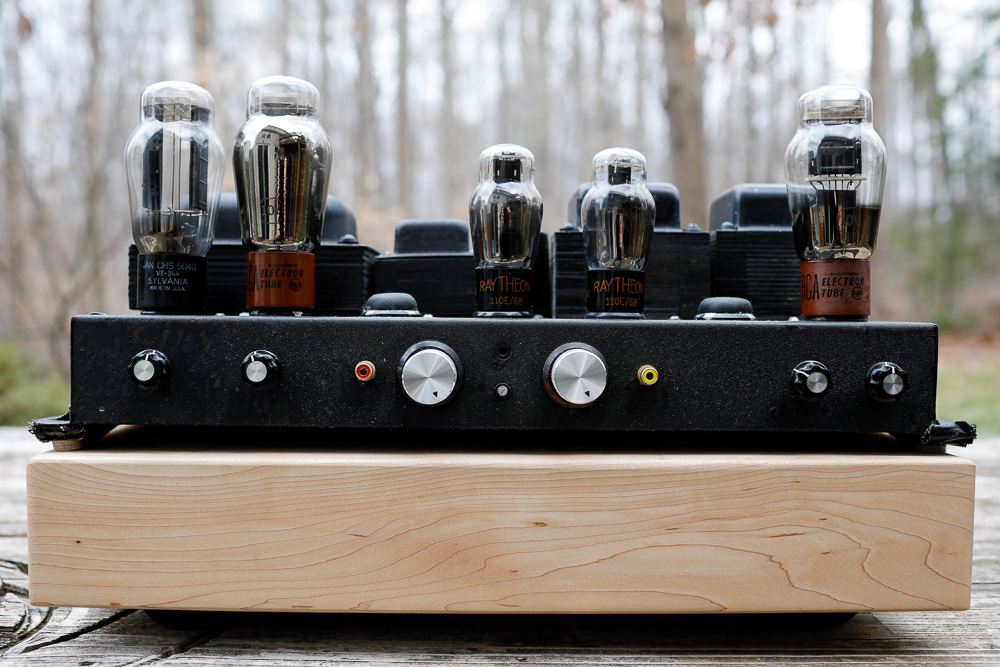
|
||||||||

|
||||||||
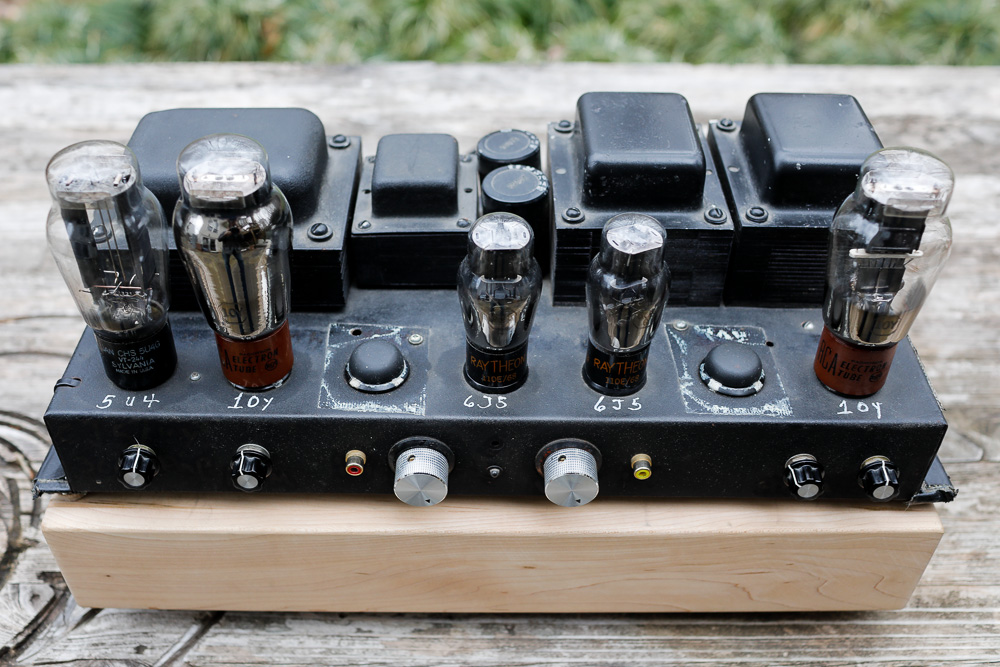
|
||||||||
|
I have definitely developed a fondness for the Hogan look and feel, the intimate handwriting and the wonderful uniqueness of these special pieces of audio history. |
||||||||
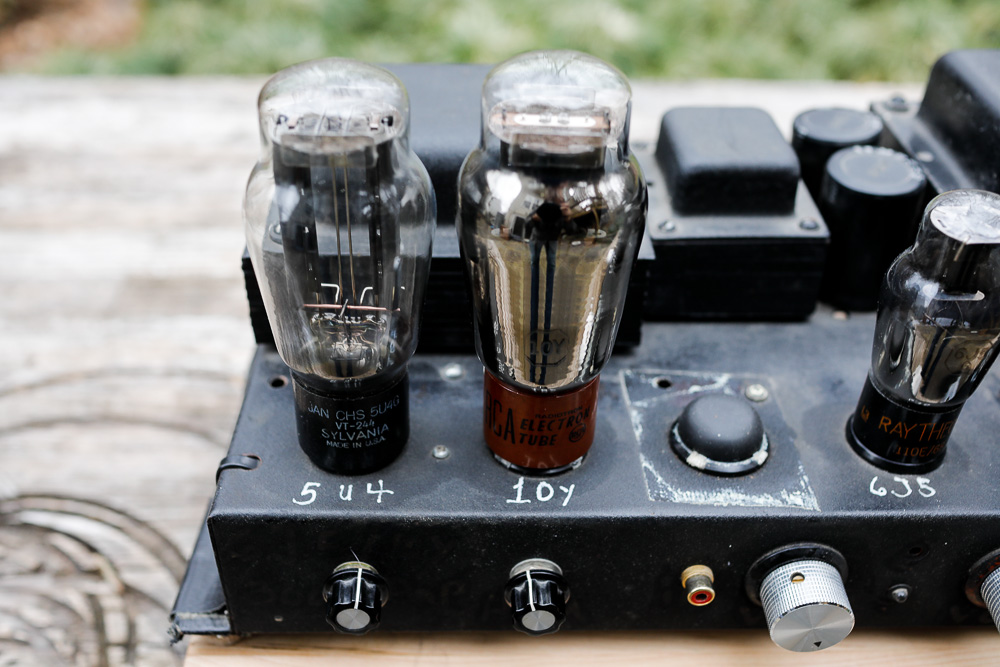
|
||||||||
|
The 10Y driven by the 6J5 and rectified with a 5U4. The empty socket is covered here by a Sorbothane footer leftover from some project or other in the past. |
||||||||
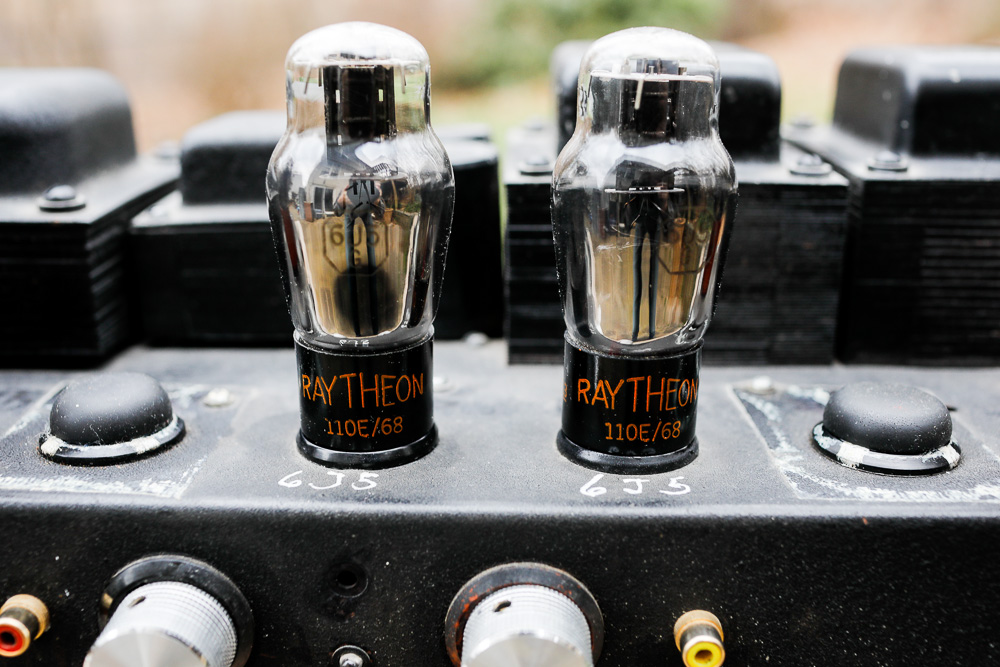
|
||||||||
|
The 6J5 is basically one half of a 6SN7. In some circuits that use the 6SN7, a dual triode, only one half of the tube is actually being engaged. In this case, technically a 6J5 could also do the job, but the pinout is different. This is a nice pair of tubes from Raytheon with a round plate. A lot of 6J5 are metal tubes (its from that era and was never meant to woo the consumer) which also sound great. |
||||||||
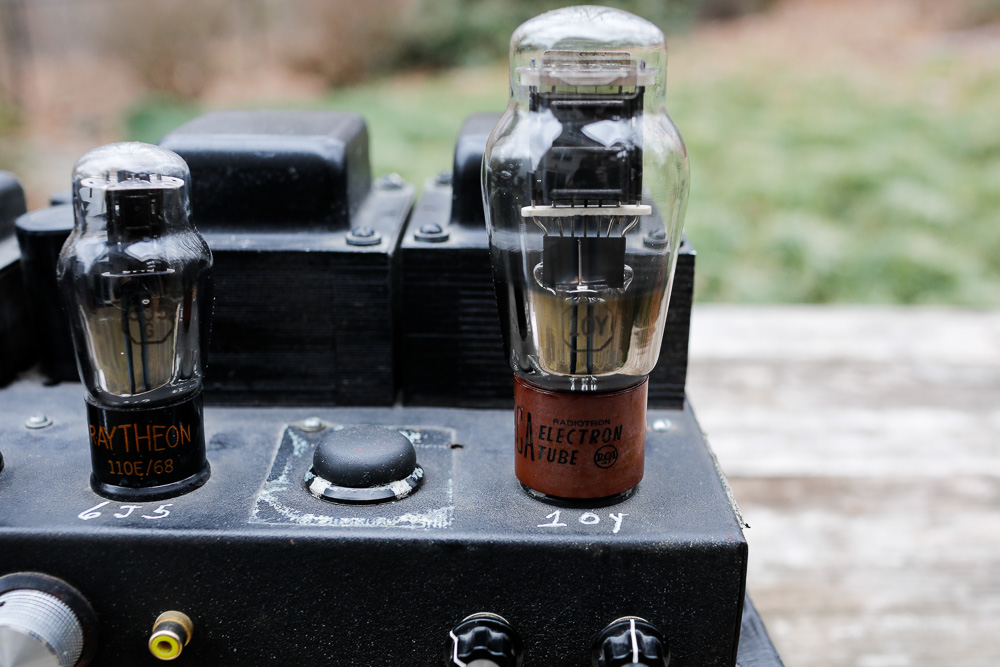
|
||||||||

|
||||||||
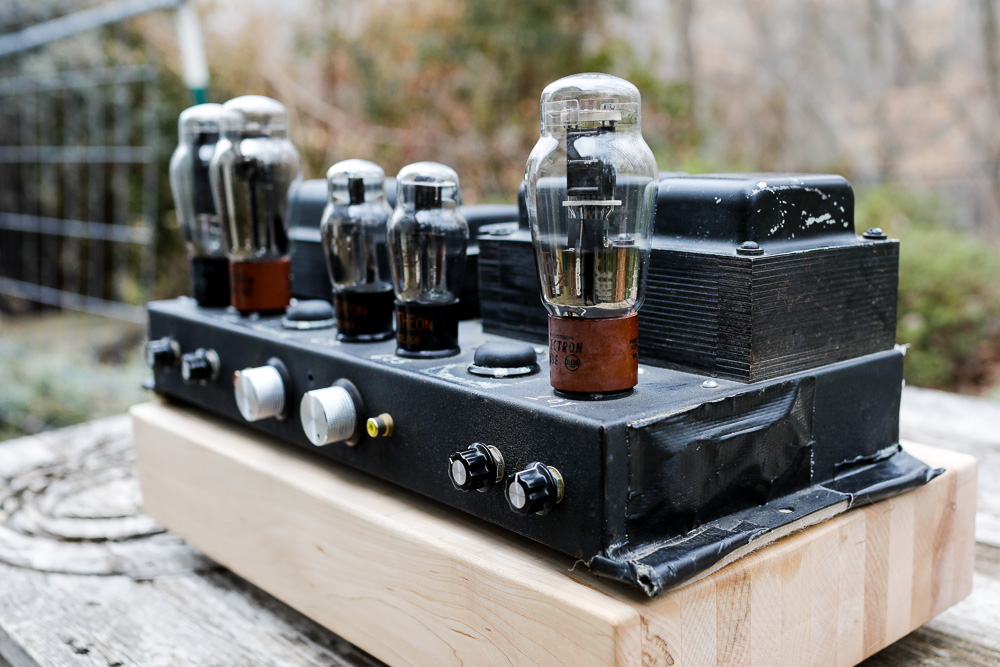
|
||||||||

|
||||||||
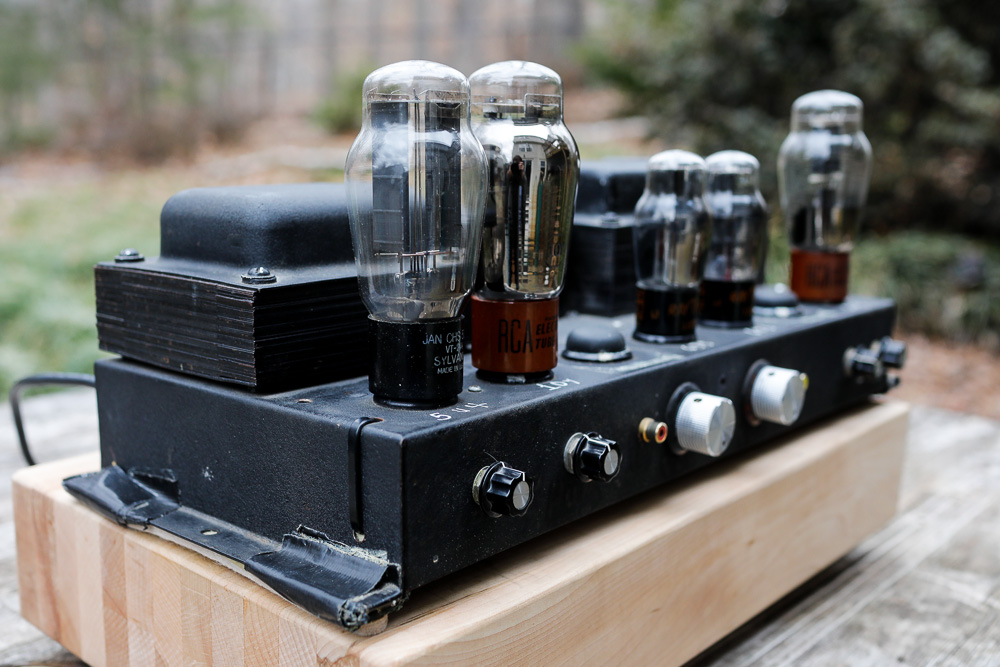
|
||||||||

|
||||||||
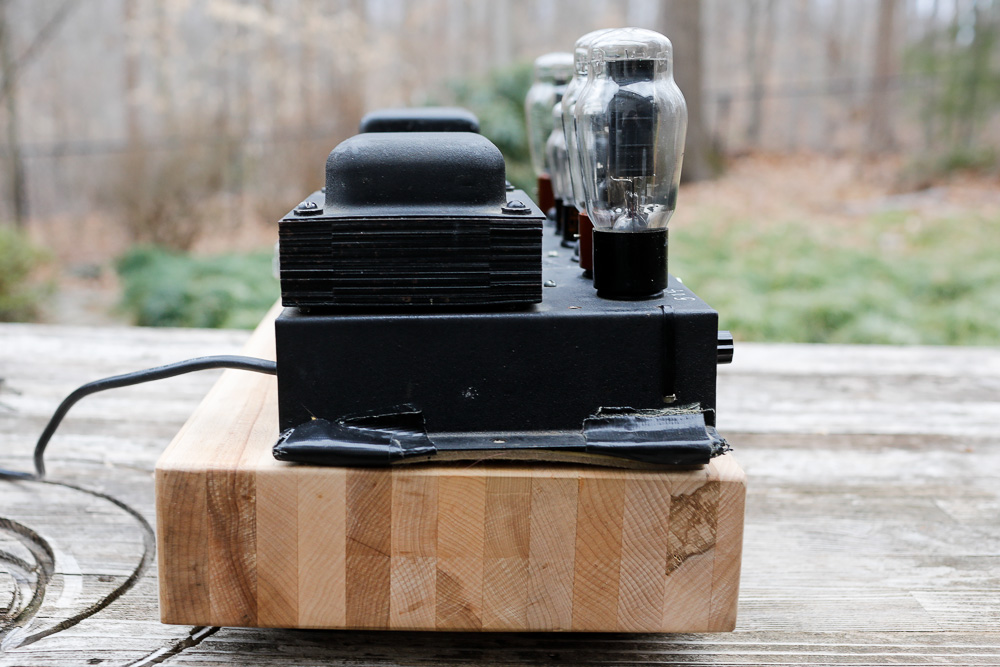
|
||||||||

|
||||||||
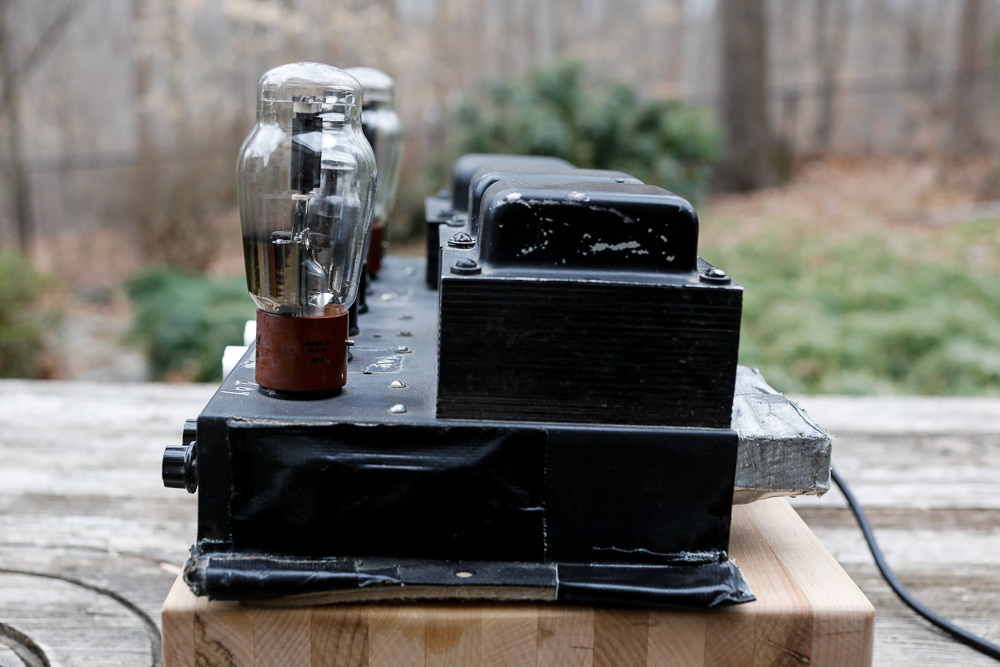
|
||||||||

|
||||||||
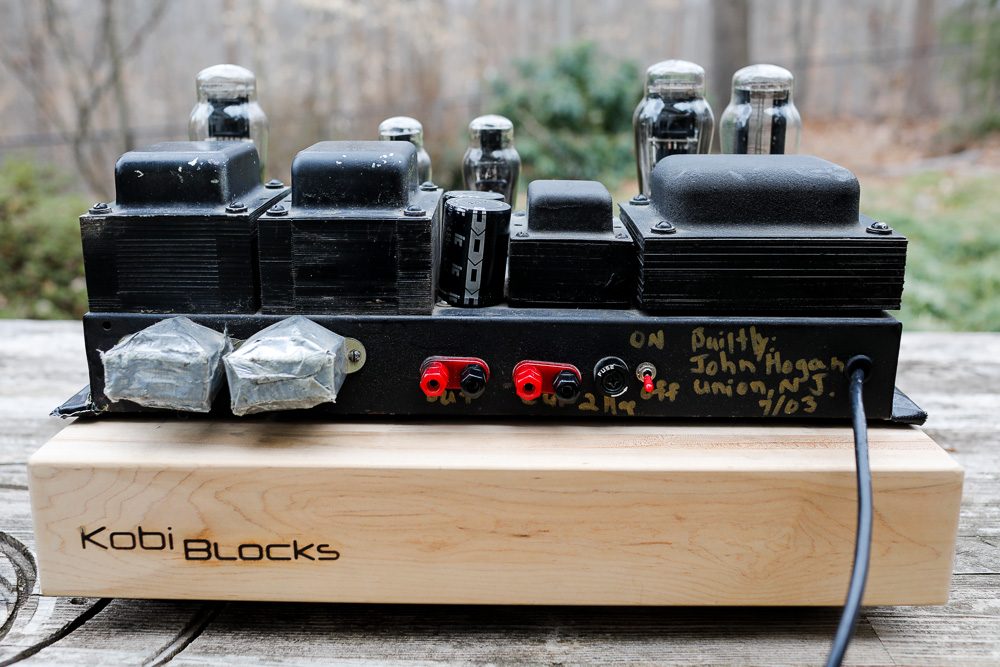
|
||||||||

|
||||||||
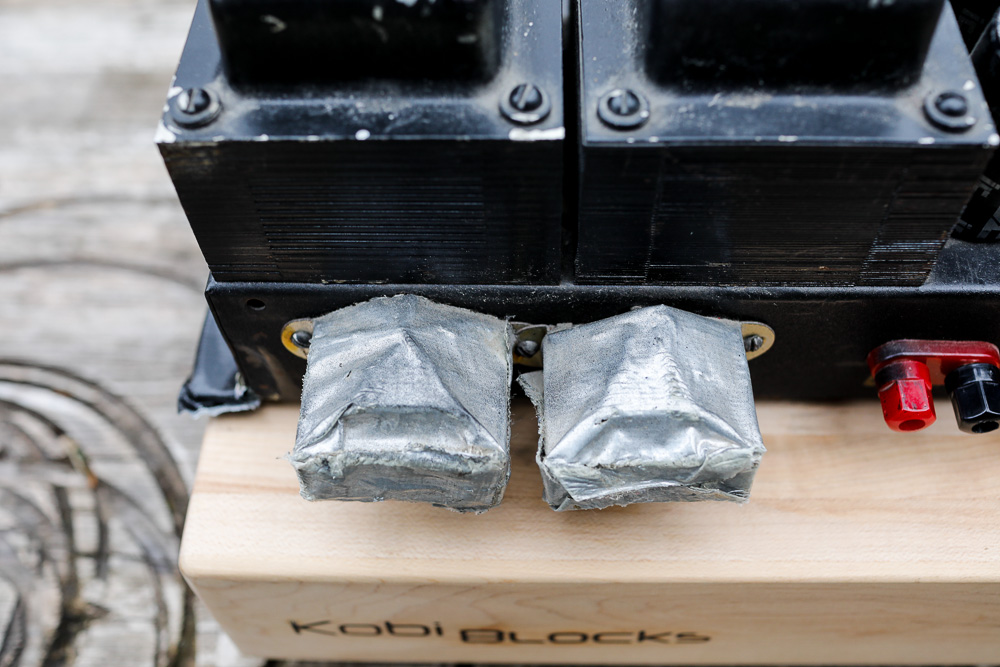
|
||||||||
|
I’ve been wondering about these duct taped small transformers or chokes that seem sort of an afterthought or addition to this build. As I understand, the 10 needs a 7K primary output transformer, which is not common like 2.5k or 5K primaries. As this looks like the Webster iron, which is presumably 2.5 or 5, I’m thinking that these might somehow span the gap? |
||||||||
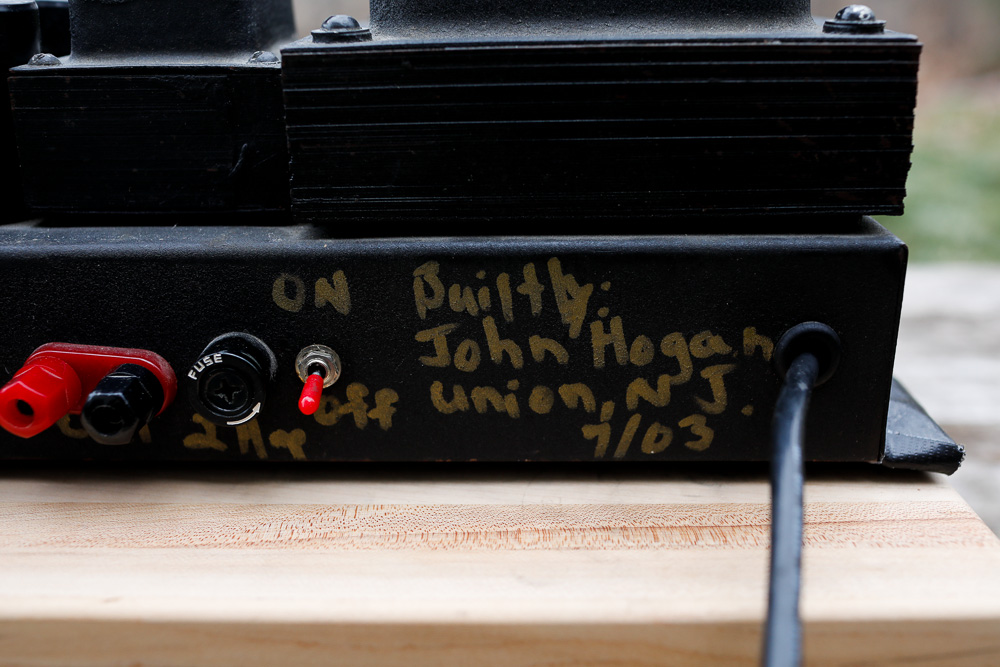
|
||||||||
|
Personalization. |
||||||||
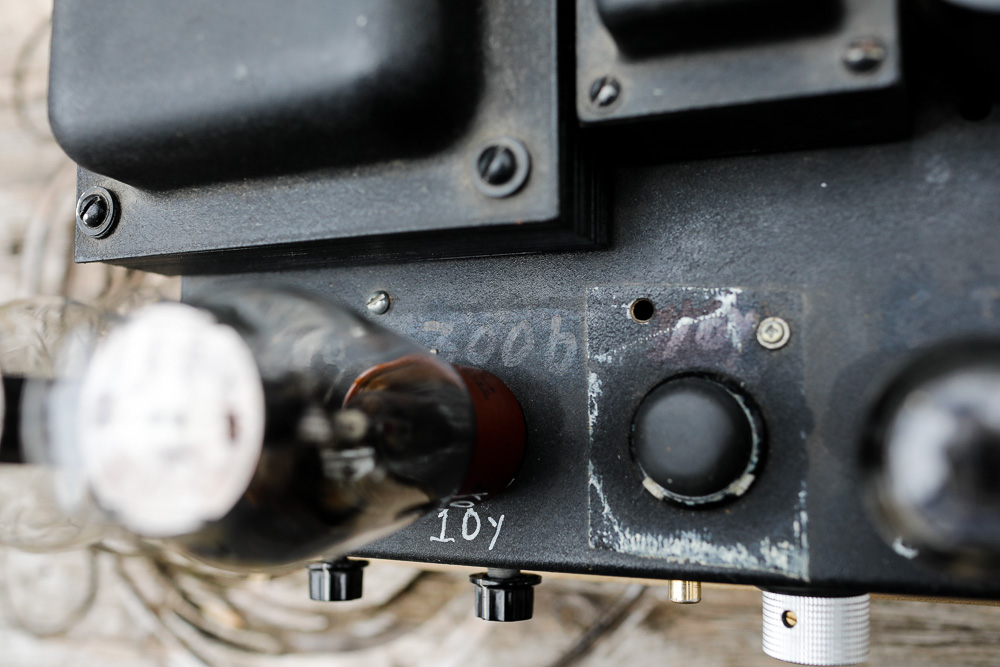
|
||||||||
|
This appears to be a recycled chassis, with the markings from a previous 300B / 10Y project hidden underneath. Perhpas a 10Y driven 300B? Audio Archaeolgy folks! |
||||||||
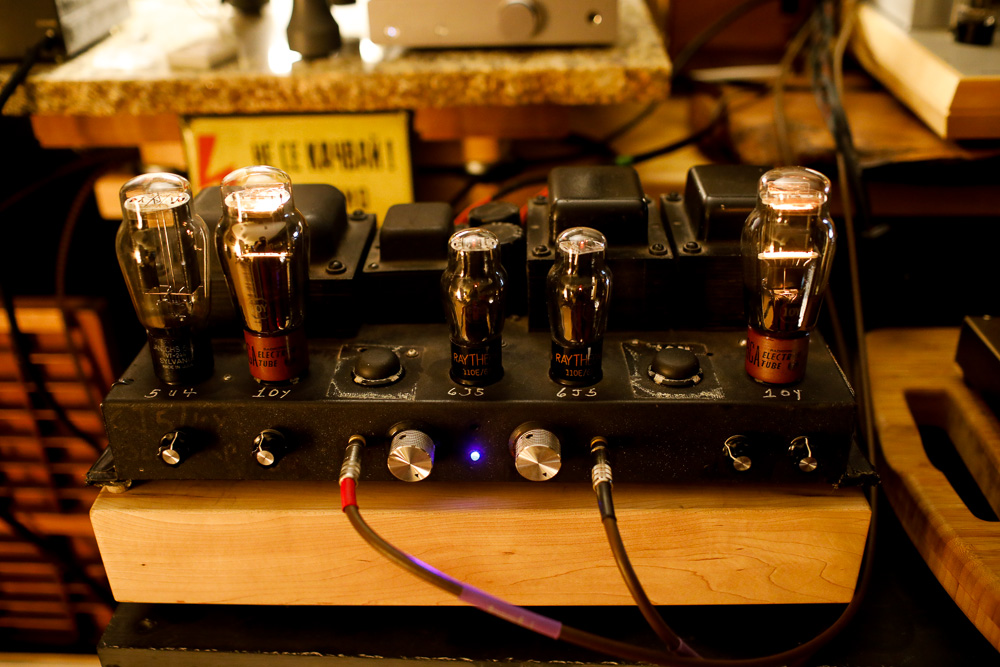
|
||||||||

|
||||||||
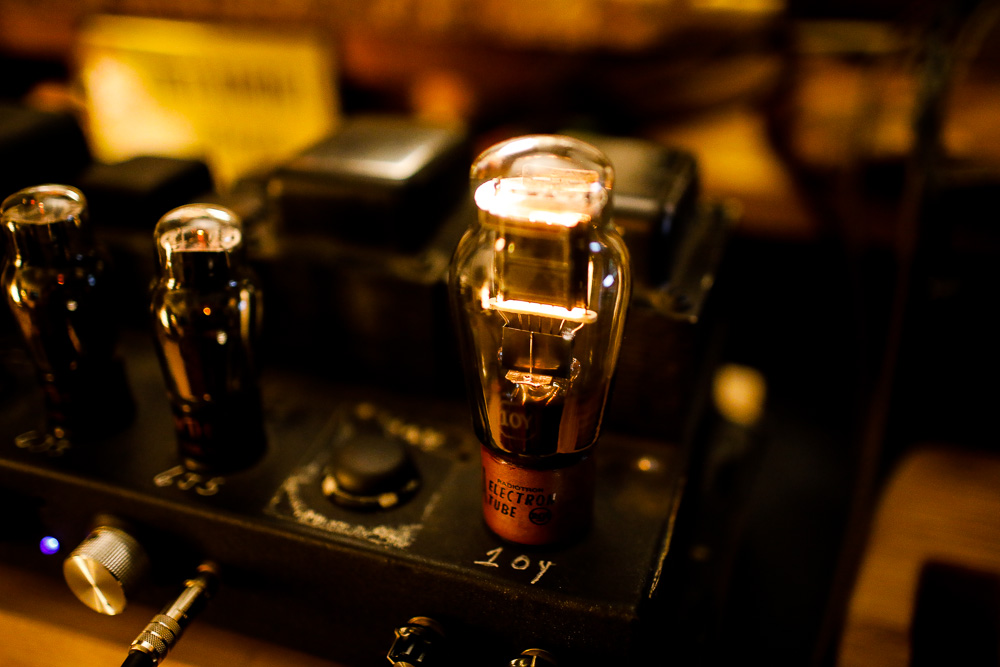
|
||||||||
|
There's no mistaking the 10Y tube's glow! |
||||||||
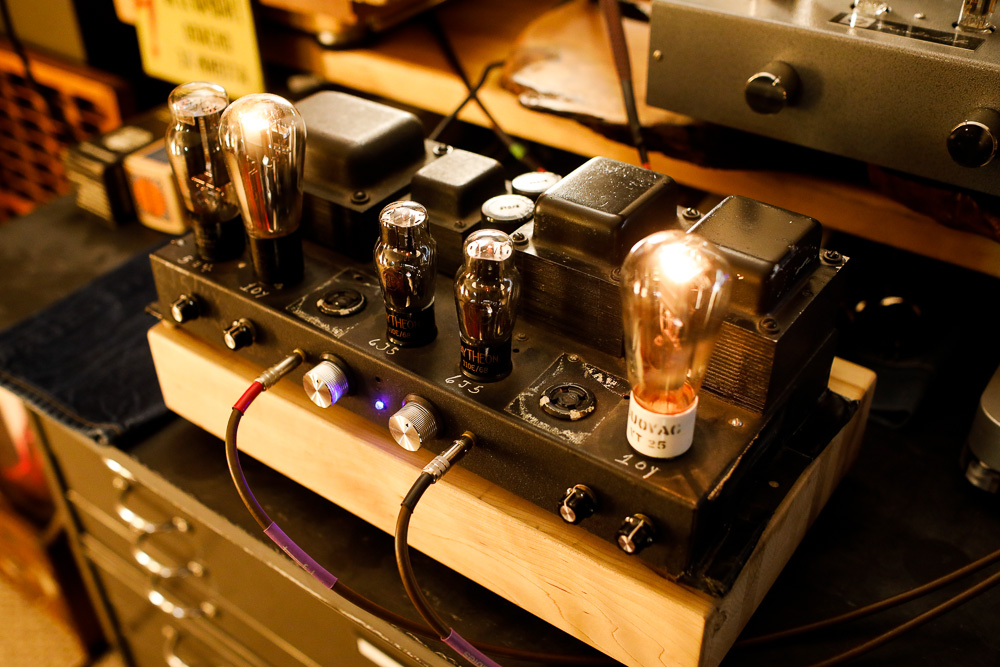
|
||||||||
|
The 10 globe is probably my favorite tube of all time, and the ceramic base Duovac VT 25 tube here is my favorite in the collection. |
||||||||
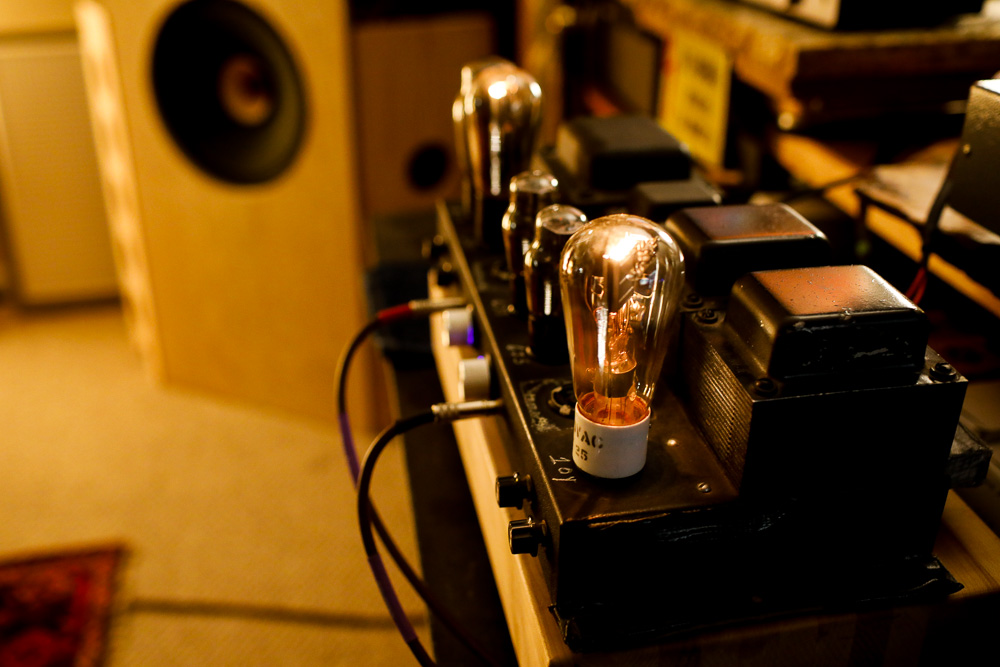
|
||||||||

|
||||||||
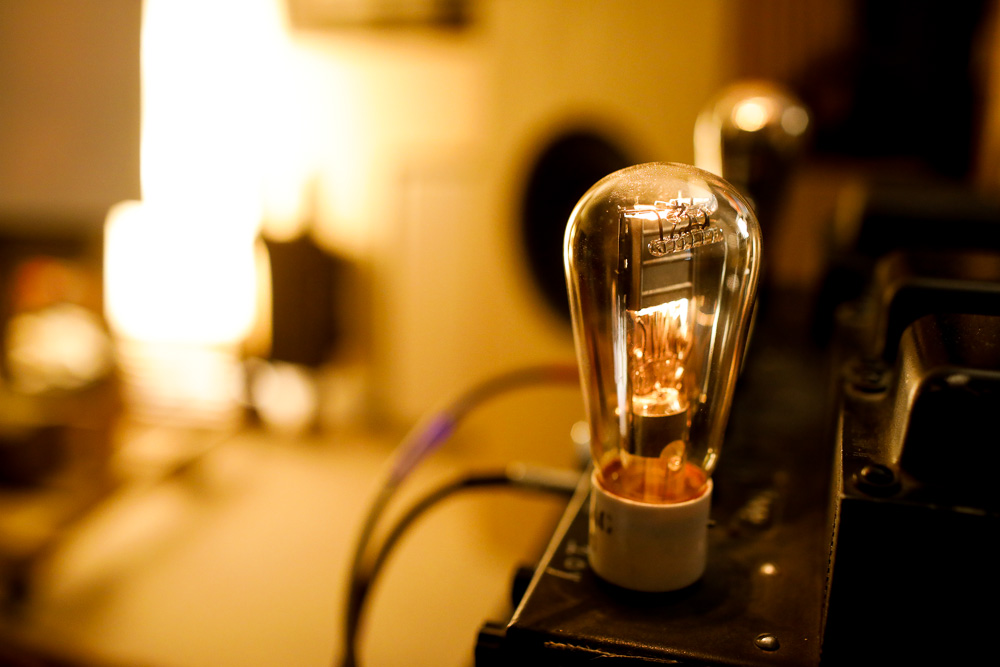
|
||||||||
|
Quite a lot of difference in the construction of these 10 globes, but I cant tell a difference in sound. Both are superb. |
||||||||
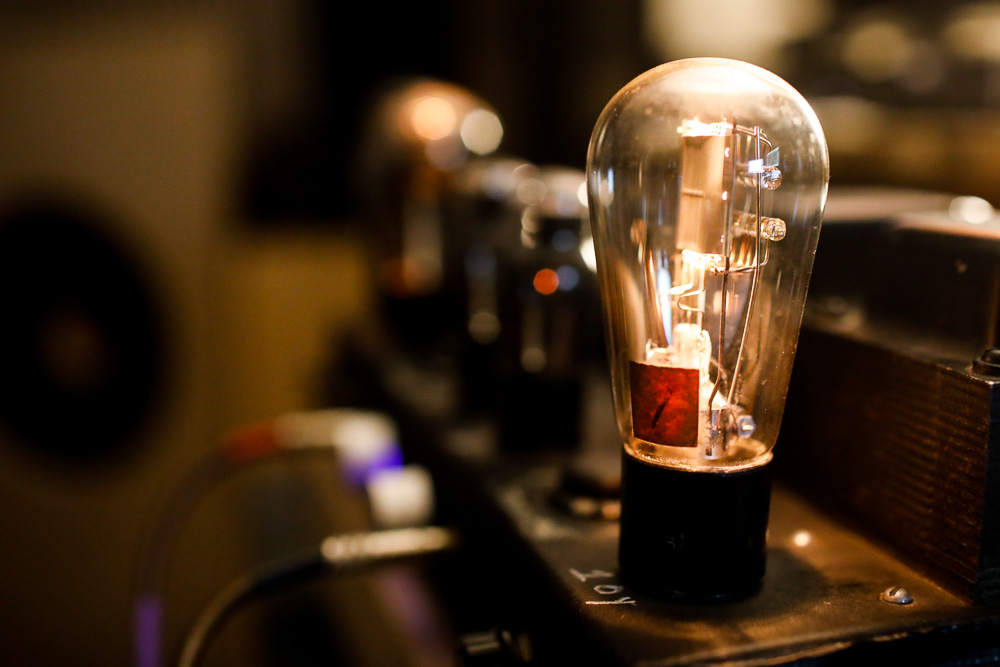
|
||||||||

|
||||||||
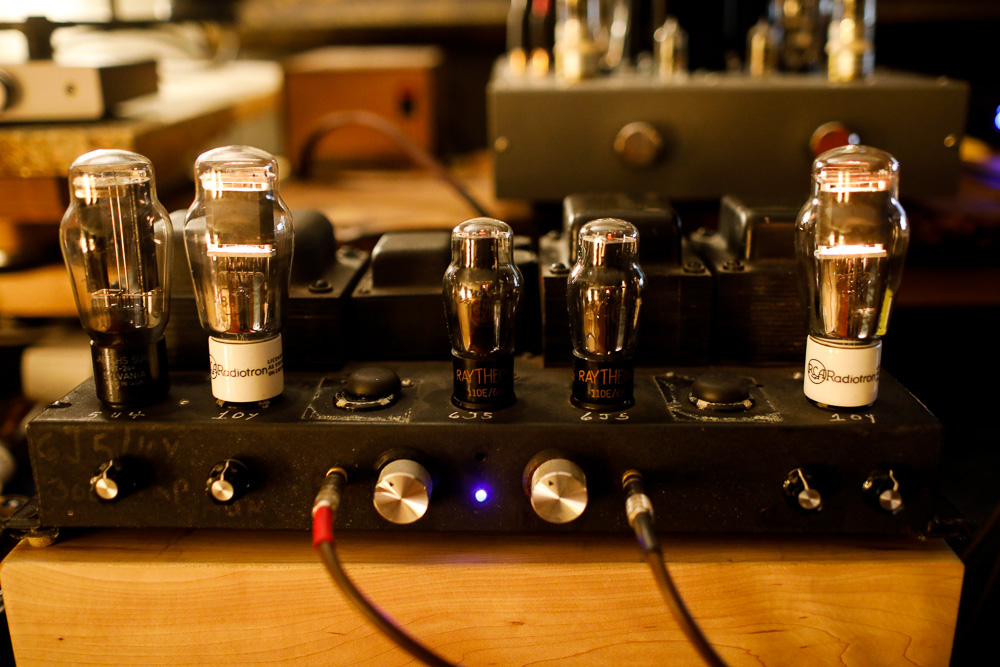
|
||||||||
|
Here are a pair of very special early 1930s ceramic base RCA 801a tubes. These are wonderful sounding tubes that are the big brother of the 10. In the right circuit, the 801a will make 6-8 watts of single ended power as opposed to 1.5 watts from the 10. |
||||||||
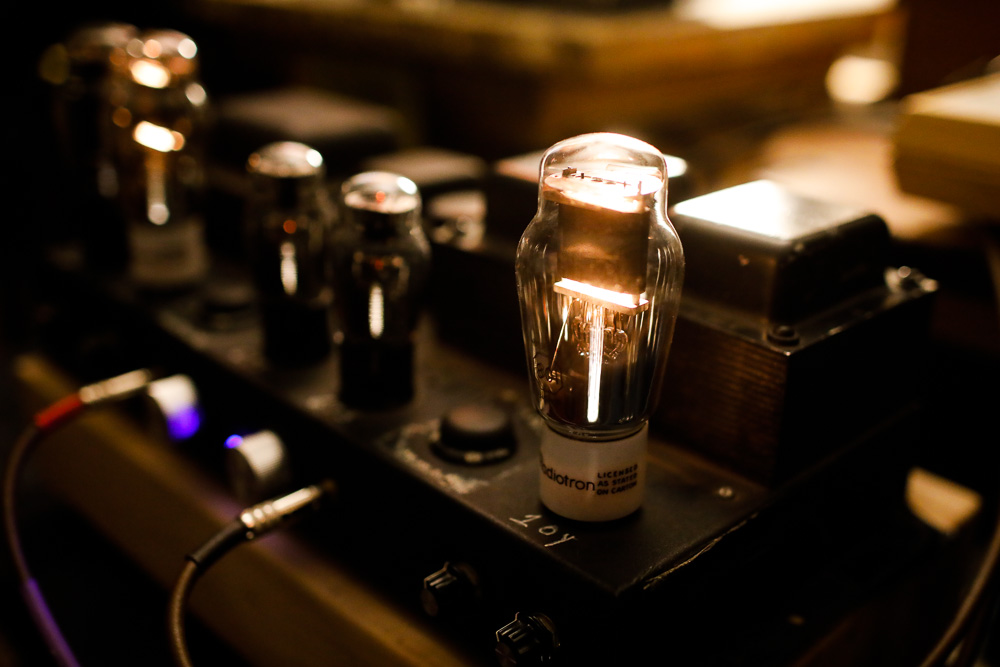
|
||||||||

|
||||||||
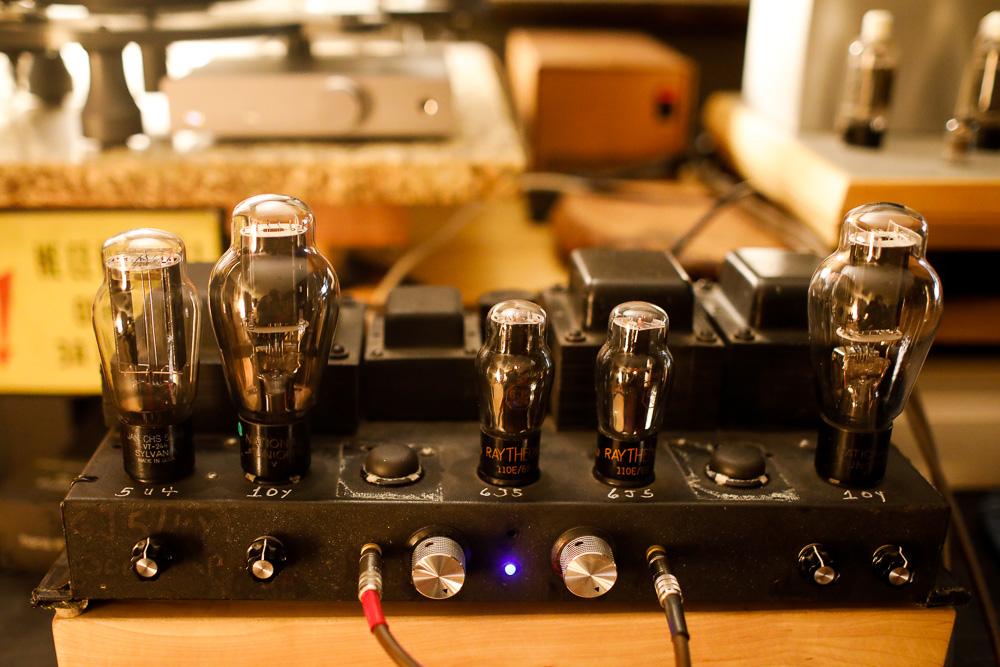
|
||||||||
|
These are odd tubes, National Union 10Y in large ST envelopes more the size of the 300B or the 50. These must be oxide coated filaments, because there is very little glow when running. These tubes have the least of the 10 sound of any 10 I have had so far, in fact I am somewhat suspicious that these are actually Type 50 tubes. |
||||||||
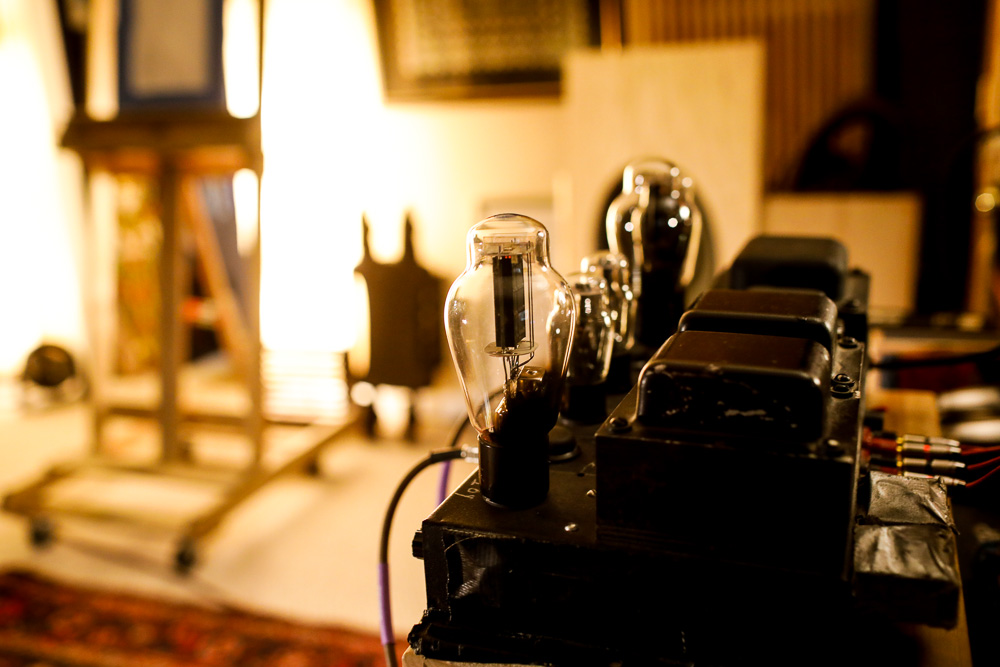
|
||||||||

|
||||||||
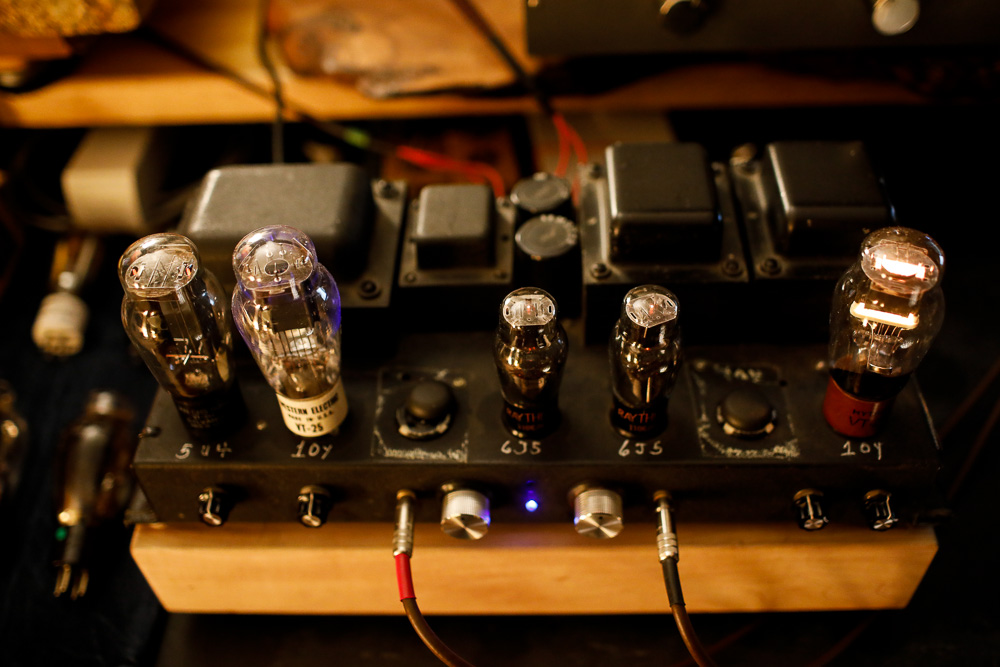
|
||||||||
|
Here you can see the visual difference between an Oxide filament and a Thoriated Tungsten filament. The tube on the left is a Western Electric VT25a and on the right is a Hytron VT25. Confusing, isnt it? |
||||||||
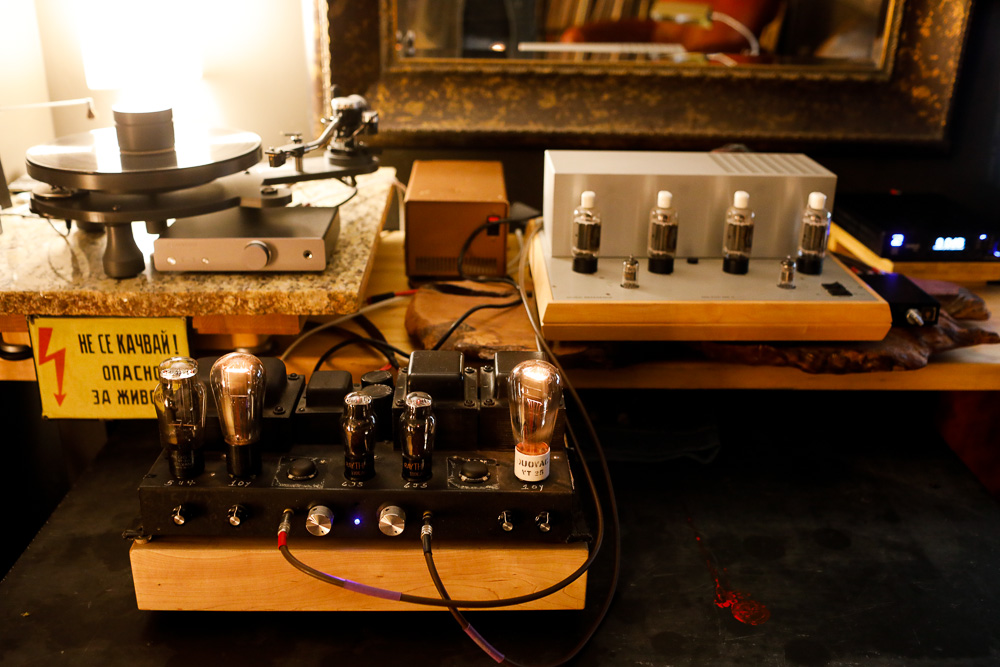
|
||||||||
|
It has been very interesting running these two amps against each other for several weeks now. Roger Modjeski’s OTL-1 and John Hogan’s 6J5/10Y. I’ve used both of them with the Luminous Audio Axiom preamp, a completely neutral volume control only. I’ve also used both with tube preamps from Decware, Schiit and Dennis Had. Spoiler: the Axiom is better than any of them. In all cases, both amps are extremely revealing and enjoyable musical machines, and in my opinion represent the very pinnacle of esoteric, small-scale modern tube amplification. |
 |
|||||||
 |
 |
 |
 |
 |
|||
 |
|||||||
 |
|||||||